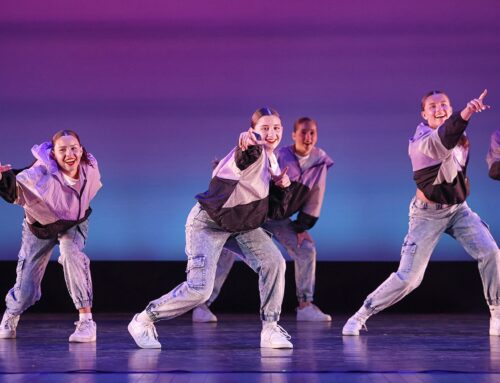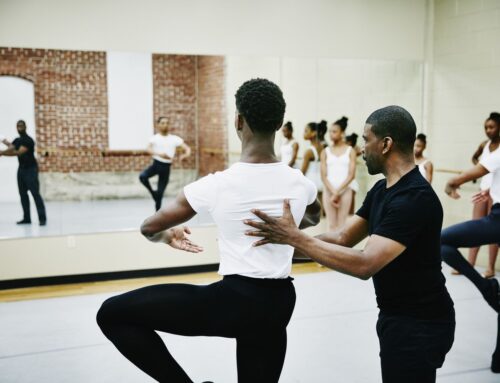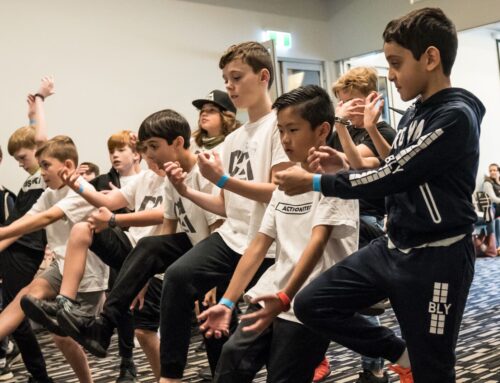Parents often view dance as a fun recreational activity, but movement education offers far more comprehensive benefits than many realize. While ballet classes for kids provide technical training in positions and steps, the real value lies in the character development and practical skills that transfer to every area of a child’s life. From academic performance to social relationships, dance instruction develops foundational skills that benefit children throughout their development and into adulthood. This exploration examines how structured movement education develops specific competencies that extend far beyond the studio walls. Understanding these broader benefits helps parents make informed decisions about their children’s extracurricular activities and long-term development.
Creativity and Expression
Dance provides children with a unique outlet for exploring their imagination and developing original ideas through physical movement. Unlike many structured activities, dance encourages individual interpretation and personal style within technical frameworks. Children learn to translate emotions, stories, and abstract concepts into movement sequences that communicate without words.
This creative process develops problem-solving skills as young dancers learn to express complex ideas through their bodies. They experiment with different approaches to the same movement, learning that multiple solutions can be equally valid. This flexible thinking translates to academic subjects, where creative approaches often lead to breakthrough understandings.
Personal expression through dance builds emotional intelligence as children connect their internal experiences with external movement. They develop vocabulary for feelings and learn healthy ways to process and communicate emotions. This emotional literacy proves valuable in friendships, family relationships, and future academic or professional collaboration.
Regular opportunities for creative movement help children develop confidence in their unique perspectives and ideas. They learn to trust their instincts and make artistic choices without constant external validation. This self-reliance serves them well in situations requiring independent thinking and decision-making.
Discipline and Focus
Regular dance training teaches children that meaningful achievement requires consistent effort and dedicated practice. They learn to break complex skills into manageable components, working methodically toward mastery of challenging techniques—this systematic approach to learning transfers directly to academic subjects and other skill-based activities.
Concentration skills develop naturally as children focus on precise movements, musical timing, and spatial awareness simultaneously. The demands of dance require sustained attention that builds mental stamina and improves classroom focus. Teachers often notice an improvement in students’ attention spans when they participate in regular dance training.
Goal-setting becomes second nature as dancers work toward recital performances, competition pieces, or technical milestones. Children learn to establish realistic timelines, track their progress, and adjust their efforts based on results. These project management skills prove valuable throughout their educational and professional careers.
Time management develops as dance students balance practice requirements with other responsibilities. They learn to prioritize activities, use practice time efficiently, and maintain consistency despite competing demands. These organizational skills become increasingly important as academic and social obligations grow more complex.
Confidence and Self-Esteem
Dance training builds self-confidence through a series of small victories that accumulate over time. Children experience the satisfaction of mastering challenging movements, performing for audiences, and receiving positive feedback for their efforts. Each accomplishment reinforces their belief in their ability to learn and grow.
Physical confidence develops as children become more comfortable and capable in their bodies. They develop better posture, coordination, and spatial awareness that affects how they carry themselves in all situations. This physical poise often translates to increased confidence in social and academic settings.
Performance opportunities teach children to manage nervousness and present themselves effectively in front of others. These experiences build public speaking confidence and reduce anxiety about being the center of attention. Many former dance students credit their early performance training with later success in presentations and interviews.
Constructive feedback in dance classes teaches children to receive criticism positively and use it for improvement. They learn to separate their worth from their current skill level, developing resilience that helps them handle challenges throughout life.
Teamwork and Collaboration
Group dance training teaches children to coordinate their efforts toward shared goals. They learn that their success depends partly on supporting their teammates and contributing to the group’s overall performance. This understanding of interdependence proves valuable in school projects and future workplace collaboration.
Communication skills develop as dancers learn to give and receive feedback, offer encouragement, and work through creative differences. They practice active listening as they follow instructions and respond to their partners’ movements. These interpersonal skills transfer to all areas of social interaction.
Leadership opportunities arise naturally in dance settings as more experienced students help newcomers and advanced dancers take responsibility for group performances. Children learn to balance assertiveness with consideration for others, developing leadership styles that serve them throughout their lives.
Appreciation for diverse strengths grows as children see how different personality types and physical abilities contribute to successful group performances. They learn that teams function best when members’ unique qualities are valued and utilized effectively.
Physical and Mental Well-being
Regular dance training provides comprehensive physical fitness, encompassing cardiovascular endurance, strength, flexibility, and coordination. Unlike many sports that focus on specific muscle groups, dance promotes balanced physical development, supporting overall health and injury prevention.
Mental health benefits include stress relief through physical expression and the meditative aspects of focused movement. Children learn healthy coping mechanisms for dealing with pressure and develop positive associations with physical activity, promoting lifelong wellness habits.
Body awareness and proprioception improve significantly through dance training, helping children understand their physical capabilities and limitations. This awareness reduces the risk of injury in other activities and promotes healthy relationships with their bodies throughout development.
Social connections formed in dance classes provide important peer support and friendship opportunities. The shared experience of learning challenging skills and performing together creates strong bonds that enhance children’s overall well-being and sense of belonging.
Regular physical activity through dance supports better sleep patterns, improved mood regulation, and enhanced cognitive function that benefits academic performance and emotional stability.
Related Topics:
- Finding Confidence Through Dance for Teens: A Fun Way to Grow Self-Esteem
- Embracing Dance for Boys: Breaking Misconceptions and Celebrating Benefits




